 [In this first year of the pandemic, with the fall semester now underway from PreK-12 through post-secondary, the current possibilities and limitations of the virtual classroom and distance learning have become foregrounded for the first time — not just experientially in the lives of teachers and students and parents but in the public discourse.
[In this first year of the pandemic, with the fall semester now underway from PreK-12 through post-secondary, the current possibilities and limitations of the virtual classroom and distance learning have become foregrounded for the first time — not just experientially in the lives of teachers and students and parents but in the public discourse.
Arguably, with so many bricks-and-mortar educational facilities closing their physical doors and moving their content offerings to the web, this results from COVID-19 restrictions effectively dragooning parents into roles somewhere between classroom observers and homeschoolers.
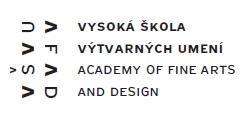 This is a slightly edited version of a lecture on that subject delivered on November 4, 2011, at the History of Photography Conference, Academy of Arts and Design, Bratislava, the Slovak Republic. My presentation was co-sponsored by the Central European House of Photography and the VASA Project. You’ll find part 2 below; click here for part 1. — A.D.C.]
This is a slightly edited version of a lecture on that subject delivered on November 4, 2011, at the History of Photography Conference, Academy of Arts and Design, Bratislava, the Slovak Republic. My presentation was co-sponsored by the Central European House of Photography and the VASA Project. You’ll find part 2 below; click here for part 1. — A.D.C.]
•
What Would Socrates Do?
Teaching History, Criticism, and Theory of Photography Online
•
(continued) … Should we treat the classroom as a shelter, or as a testing ground?
In the 1980s I took doctoral-level courses with Prof. Neil Postman in the Media Ecology program he founded at New York University. Postman authored such books as Amusing Ourselves to Death, Informing Ourselves to Death, and Technopoly. He advocated the use of the classroom — from kindergarten on up — as a sanctuary in which students were protected from the onslaught of media, especially mass media.
He practiced what he preached, even in that graduate-studies context. In the seven years during which I took courses with Postman and his colleagues in that department, we never once watched a film or TV show together, never examined a newspaper page or a magazine layout or a photography book or an isolated image of any kind. We read texts, wrote papers, and talked. In short, he consciously ran a medieval classroom.
I left that program circa 1990, and Postman died in 2003, so I don‘t know how he adjusted to the university’s evolution toward media-saturated classrooms. I’m sure he would have hated them.
It may still be possible to carve out some haven in which scholars are shielded from the invasion of media. But it seems perverse to attempt that in a media studies program. The disciplines I’m addressing here today — the history, criticism, and theory of photography — all represent forms of media studies. And the medium of photography that underpins them is moving inexorably toward digital form and online delivery. So I think we need to accept, if not embrace, that evolution, mirroring it in our teaching practice.
•
2011 is not 1960.
The classroom at Hunter College that I entered in 1960 resembled the classroom in which I taught at NYU that semester in 2009 only in its architecture. The options for content delivery and reception, and for interaction with that content and the faculty providing it, had changed dramatically.
•
More importantly, I and the cohort of students to which I belonged in 1960 resembled the cohort that walks into our classrooms today only in their physiology and basic psychological and emotional structure. Socially, culturally, and especially in their relation to information technology, they’re radically different from me, and from anyone born before the emergence of the internet and the World Wide Web.
My classmates and I were trained to sit passively in we-talk-you-listen relationships to media (printed books and periodicals, movies, TV, radio), and to carry that passive receptivity into the classroom, where teachers talked and we listened — unless invited to raise our hands to ask questions.
Today’s students have grown up with and function easily within an immersive, interactive media environment. They carry cameras in their pockets, as part of their cellphones, and make and transmit photographs and videos to other people every day. Many of them publish still images and videos via Flickr, YouTube, Facebook, and other online outlets.
 They write extensively (if not well, by my 1960 standards) — four or more hours a day when you combine email, instant messaging (IM) and cellphone texting. And they often publish that writing for the world to see, via Twitter and Facebook accounts, blogs of their own, comments at the websites and blogs of others.
They write extensively (if not well, by my 1960 standards) — four or more hours a day when you combine email, instant messaging (IM) and cellphone texting. And they often publish that writing for the world to see, via Twitter and Facebook accounts, blogs of their own, comments at the websites and blogs of others.
They spend additional hours each day surfing online, then more time absorbing audio, video, and multimedia content — on their computers, via their iPods and iPhones and Androids and Kindles and other electronic devices.
These are their habitual relationships with technology. They also constitute skillsets, at which your students may be more adroit than you are. Expecting them to set all this aside to work with printed texts exclusively, or even primarily, is simply unrealistic. So: Recognize and engage your students’ technological skillsets or lose them.
•
What can you do via online/distance learning that you can’t do in the bricks & mortar classroom?
- Let’s construct a lesson plan relating to Edward Steichen, certainly one of the most influential figures in 20th-century photography. Online you can find the website of the permanent installation of his curatorial magnum opus, “The Family of Man,” in Luxembourg. This includes a virtual tour of the exhibition, plus much important supplementary material. The Library of Congress’s Prints & Photographs division has royalty-free Steichen images in several sizes at its website. Bill Jay’s essay on “The Family of Man” is available at his website, and there are other texts about Steichen available free online. At YouTube you’ll find a video podcast, “Edward J. Steichen’s Autochromes of Charlotte Spaulding,” by Anthony Bannon, Director of the George Eastman House; a video on Steichen’s World War II work with the U.S. Navy, from Smithsonian Magazine; short videos about him; interviews with him. The National Gallery of Art in Washington, DC, has a slideshow online about Steichen as a painter. Your school’s library system undoubtedly subscribes to services that provide access to databases of scholarly journals and general-audience periodicals. And if your institution also subscribes to the Photography Criticism CyberArchive (photocriticism.com), which I direct, you’ll find early writings by and about Steichen there.
- The BBC films of John Berger’s 1970 series “Ways of Seeing,” for which his book by the same name was merely a supplement, have never been released on DVD. But they are mostly available on YouTube — a fine example of an early effort to teach seriously in the mass media, by the way. YouTube also has an assortment of other videos involving Berger: lectures, interviews, and more. There are texts by him online, including “Understanding a Photograph” and his introduction to Finnish photographer Pentti Sammallahti’s “Dog Days.” Also text interviews with him and articles about him. You might come across Austin Kleon’s cartoon guide to “Ways of Seeing.” Your school’s library system can undoubtedly access more texts by and about Berger.
- Do you want to teach your students about those who invented the medium? The website of the now-restored Nicéphore Niépce House in France has numerous resources, including a filmed tour of the house and lab. Between Google Maps and the National Trust’s website for Lacock Abbey and the Fox Talbot Museum, you can construct a virtual tour of the site where the positive-negative process was invented. R. Derek Wood’s downloadable PDF of his lengthy scholarly article on Daguerre provides information and images about Daguerre’s home and workplace. You’ll find other texts by and about all of them online — including the complete “Pencil of Nature” by Fox Talbot at the Photography Criticism CyberArchive.
- And if, in teaching theory of photography, you decide to address the Alan Sokal/Social Text scandal (in which a noted physicist thoroughly discredited the claims to scientific knowledge of Jacques Derrida, Luce Irigaray, and a gaggle of postmodernist poseurs), you can do so with one-stop shopping. Sokal has posted all the relevant documents on his regularly updated homepage at New York University, including the paper with which he started it all, “Transgressing the Boundaries: Towards a Transformative Hermeneutics of Quantum Gravity,” in which he argued, in true postmodern fashion, that gravity was nothing more than a cultural consensus. This 1996 hoax still reverberates today. There are Sokal-related videos available on YouTube.
•
The amount of material available online is vast. It’s a cornucopia. I can only hint at it here. When you engage in online/distance learning, you involve both yourself and your students in the process of using materials found online, as well as materials provided by you, your department, and your institution’s library system. There’s a lot of junk afloat in cyberspace, and a lot of stolen property stashed away as well. You need to approach these materials critically yourself, so that you can teach your students to do the same.
I should add that I am not encouraging you to either ingest the hemlock, à la Socrates, or, as we say in the States, to “drink the Kool-aid” — to imbibe uncritically that which is truly poisonous, or at least unhealthy, about these new media. To the contrary: Part of what we do when we teach via the digital media is put ourselves in a position to get our students thinking critically about the tools we and they are using. And our own active engagement with those tools, in the classroom and in our teaching methodology, actually gives us credibility with our students as critical thinkers about these technologies.
•
So, to come back to the title of this talk, what would Socrates do in this situation? Would he restrict himself to teaching only those students who could make their way to him physically, for in-person F2F interaction, and confine himself and his students exclusively to oral communication — no texts, no images? If so, he’d have to teach privately, as he did in Athens, because no teaching institution today supports such an instructional method.
We can’t know how Socrates would respond to our current situation, of course. But as someone who tries to teach in an approximation of what I understand as the Socratic style, I find synchronous online/distance learning anything but impersonal. To the contrary, it’s extremely personal, interactive, and involving.
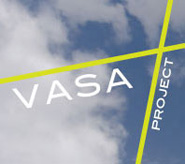 Through the VASA Project, I’ve taught distance-learning seminars in various aspects of criticism since early 2010. My students have come from all over the U.S., Canada, Europe, even China.
Through the VASA Project, I’ve taught distance-learning seminars in various aspects of criticism since early 2010. My students have come from all over the U.S., Canada, Europe, even China.
We meet online, sometimes in Skype and sometimes in Blackboard, once a week for 6 weeks, for 90-minute sessions. I post readings (in PDF format), slideshows (as QuickTime movies), audiofiles (also in QuickTime format), and links to websites where they’ll find other relevant materials. When the course involves their writing, we use Google Docs.
I’ve also been a visiting lecturer in the class of one of my VASA colleagues, Patrick Millard. I sent him some essays for his students to read, in advance. We used Skype, logging on at the appointed time. He put my Skype video up on their screen. I talked about my background and work for a bit, then opened it up to a question-and-answer session. Worked fine. My next VASA seminar, starting in early 2012, will address the specific issues involved in teaching the criticism of photography. It’s part of the VASA Project’s certificate program in teaching photography.
I’ve worked with VASA interns on developing online versions of physical exhibitions I’ve curated in China and the U.S. These get posted at the VASA Project’s website, with free access, for use by teachers, students, and others as resources on the photographers involved, making versions of these exhibitions permanently and globally available. Effectively, they’re online catalogues of the shows. The interns then go on to curate online shows of work by artists they pick, with me as a resource and mentor. We meet periodically online, in Skype. Preparation of the materials — images, texts, audio and video files — happens offline.
We post the images in two different presentational formats, the first a lightbox simulation. And the second format is a slideshow.
We also put up my curatorial essays, biographies and CVs for the photographers, links pages, and additional materials such as interviews with the photographers and myself that the interns conduct — via email, audio, or video — to augment the original catalog materials.
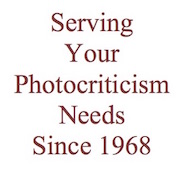 With VASA’s director, Roberto Muffoletto, I’ve also worked on developing a curriculum for a certificate program in image-archive management that will involve mostly online/distance learning, supplemented with several F2F, hands-on summer sessions held at a designated archive. We call this the VASA Image Archive Management Program (VIAMP), and we expect to premiere it in 2012.
With VASA’s director, Roberto Muffoletto, I’ve also worked on developing a curriculum for a certificate program in image-archive management that will involve mostly online/distance learning, supplemented with several F2F, hands-on summer sessions held at a designated archive. We call this the VASA Image Archive Management Program (VIAMP), and we expect to premiere it in 2012.
Working online like this with the VASA Project enables me, and enables VASA, to offer seminars, lectures, and other presentations by VASA faculty to institutions around the world, which can partner with us to supplement their own curricula with the additional materials that we can provide. Because our presentations take place online, these seminars and lectures do not involve any of the expenses incurred for travel and lodging for visiting faculty. Thus the cost per student for this enrichment of the curriculum is extremely modest. We’re always looking for new partner institutions with which to collaborate.
•
(This is a slightly edited version of a lecture delivered on November 4, 2011, at the History of Photography Conference, Academy of Arts and Design, Bratislava, the Slovak Republic. My presentation was co-sponsored by the Central European House of Photography and the VASA Project.)
(Part 1 I 2)
•
This post supported by a donation from Arthur Ollman.
•
 Special offer: If you want me to either continue pursuing a particular subject or give you a break and (for one post) write on a topic — my choice — other than the current main story, make a donation of $50 via the PayPal widget below, indicating your preference in a note accompanying your donation. I’ll credit you as that new post’s sponsor, and link to a website of your choosing.
Special offer: If you want me to either continue pursuing a particular subject or give you a break and (for one post) write on a topic — my choice — other than the current main story, make a donation of $50 via the PayPal widget below, indicating your preference in a note accompanying your donation. I’ll credit you as that new post’s sponsor, and link to a website of your choosing.
And, as a bonus, I’ll send you a signed copy of my new book, poetic license / poetic justice — published under my full name, Allan Douglass Coleman, which I use for my creative writing.


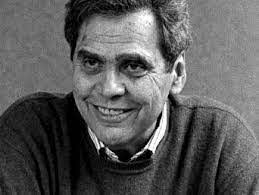
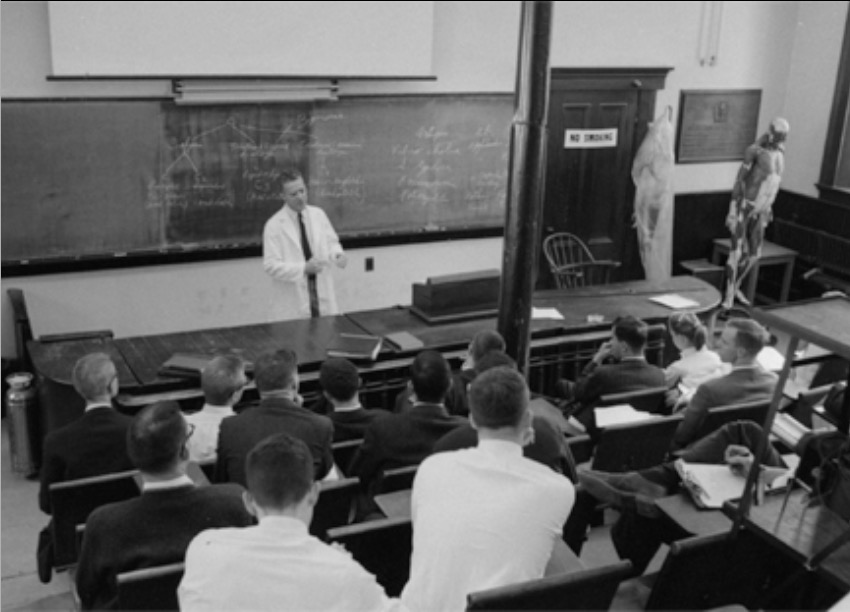





What a wonderful post.
Thanks especially for Tony Bannon’s lovely video on Steichen.
Here is the link: https://www.youtube.com/watch?v=WnSZ6SJGA30
Thanks,
Harris